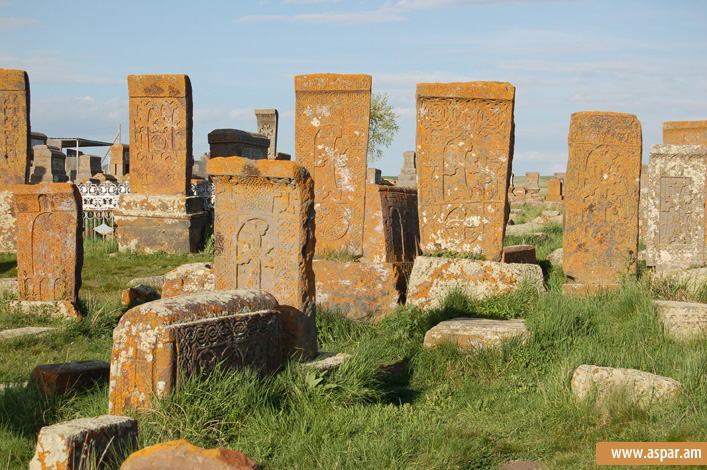Muslim photographer sees symbol of the salvation of mankind in a cross-stone

On July 24, Jordanian photographer Rami Isser will open his personal photo exhibition at the Artists’ Union of Armenia. Isser has simply fallen in love with Armenian khachkars (cross-stones). In the course of one year following his first visit to Armenia, Isser has taken thousands of photos, but only some of them will be presented in Armenia, while the rest will be showcased abroad.
Out of 18,000 photos, Rami Isser has selected 40 for his exhibition. Last spring, Isser visited Armenia and discovered a fountain with interesting ornaments on the first day.
“When I started taking photos of the fountain from different angles, people were looking at me with a look of amazement. Later, I found out that there are many cross-stones similar to that fountain in all parts of Armenia. I thought that was the only one,” Rami Isser said.
The Jordanian banker takes photos to relax and get away from it all. The upcoming exhibition isn’t Rami’s first exhibition devoted to Armenia.
His series entitled “Lights from Yerevan” has already been showcased in several countries around the world. During his visits to Armenia, Rami tours the country’s provinces and photographs cross-stones. He has seen how they are made and has heard about their significance. The Muslim photographer sees the symbol of the salvation of mankind in a cross-stone.
“I divide a cross-stone into several parts, including the crown, the head, the body and the foundation. The cross sculpted in the center is the heart. The upper part is heaven, and the center is man’s life on Earth. After death, man ascends to heaven. The making of a cross-stone is a prayer. This is how the sculpture establishes a connection with God,” Rami Isser says, as reported yerkirmedia.am.
Rami says he has photographed 80 percent of the cross-stones in Armenia. He is charmed by the cross-stones in Noradus. After his exhibition in Armenia, Rami plans on showcasing his photos in Dubai, France and the United States. He wants tourists to visit Armenia to not only see Mount Ararat, visit the Armenian Genocide Museum-Institute and taste the Armenian apricot, but also see Armenian cross-stones.
“Cross-stones have also been subjected to “genocide”. They have been eradicated in Azerbaijan, and earlier-in Turkey. A cross-stone shouldn’t be kept only in Armenia, but should be shown abroad. They should be presented on social networks, in books, on television and in schools,” Rami Isser says.
The charity exhibition-sale entitled “A Story of a Cross-Stone” will open at the Artists’ Union of Armenia on July 24th and will run until July 25th (16:00). When asked where the proceeds will go, the Jordanian photographer said he doesn’t talk about charities and only stated that the exhibition would be held in Gyumri.




 Արևելահայերեն
Արևելահայերեն Արևմտահայերեն
Արևմտահայերեն Русский
Русский






